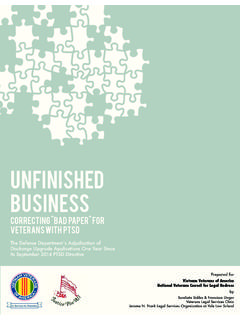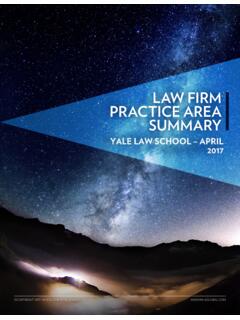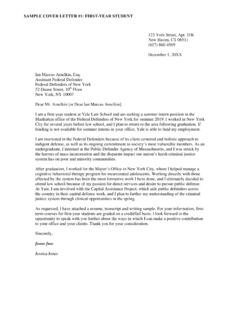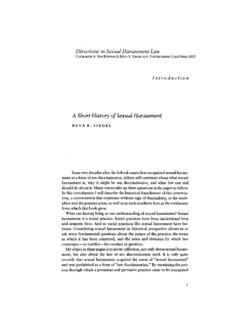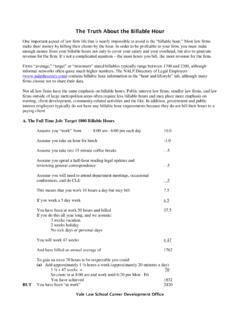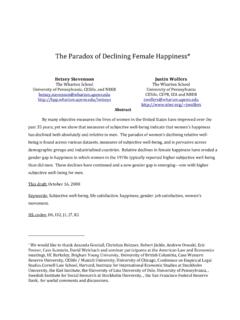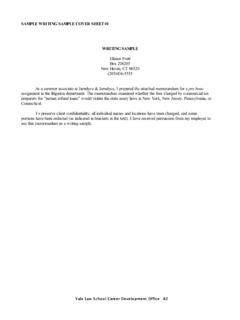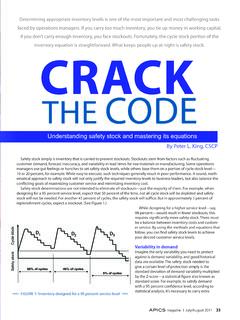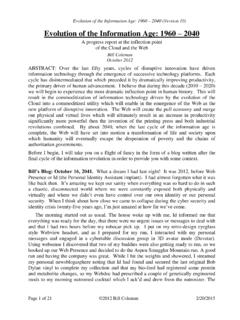Transcription of Fighting Fake News - Yale Law School
1 Fighting fake news Workshop Report hosted by The Information Society Project The Floyd Abrams Institute for Freedom of Expression On March 7, 2017, the Information Society Project at Yale Law School and the Floyd Abrams Institute for Freedom of Expression hosted a workshop intended to explore the ongoing efforts to define fake news and discuss the viability and desirability of possible solutions. The discussion encompassed attempts to identify the particular harm associated with fake news ; the many First Amendment questions that arise in any attempt to create governmental regulations on specific kinds of speech; and the pros and cons of self-regulation by those involved in the digital ecosystem.
2 This workshop was meant to be a first step towards encouraging interdisciplinary conversation and work on these issues. There were twenty-one participants from various disciplines, including members of academia, the practicing bar, news organizations, information intermediaries, data scientists, computer scientists, and sociologists. The workshop was held under Chatham House Rules. This report highlights some of the many points raised during the day-long discussion. It does not represent the views of the individual participants, their affiliated institutions, nor the sponsoring organizations.
3 Nor is this report a transcript; many points raised by participants have been rearranged by subject matter for 1 Sandra Baron and Rebecca Crootof prepared the initial draft of this report, based in part on notes provided by Anna Gonzalez, YLS 18. Participants were given the opportunity to review it and make corrections and suggestions before publication, but not all participants did so. With awareness of the irony, citations to relevant studies have been excluded to avoid inappropriate associations between statements and participants.
4 2 Table of Contents Session 1: Defining the Problem of fake news .. 3 Session 2: How Misinformation Spreads .. 5 Session 3: Identifying Players and Pressure Points .. 6 Session 4: Proposals for and Problems with Government Solutions .. 7 Session 5: Proposals for and Problems with Non-Governmental Solutions .. 10 Routes to Solutions .. 11 Participants .. 15 3 Session 1: Defining the Problem of fake news In retrospect, the issue that proved the most challenging for the workshop participants defining fake news was never satisfactorily resolved.
5 Instead, participants relied heavily on First Draft s taxonomy, which identifies seven types based on degrees of falsity and intentionality, which was recognized as being helpful but The discussion began with the question of whether fake news has now been used in so many different contexts that it is now fundamentally worthless. Workshop participants did distinguish between information and articles that are false from inception from information and articles that may or may not be false but are framed in ways to make them highly charged and often misleading.
6 The latter category often is characterized as Rather than spending an inordinate amount of time attempting to create a more precise definition of fake news or to debate the variety of forms it takes, participants focused instead on identifying its specific harms. Participants determined that the most salient danger associated with fake news is the fact that it devalues and delegitimizes voices of expertise, authoritative institutions, and the concept of objective data all of which undermines society s ability to engage in rational discourse based upon shared facts.
7 From this perspective, the distinguishing between Macedonian teenagers who distribute false stories for profit and those who engage in ideological propaganda may be focusing on a distinction without a difference, given how both contribute to creating societal chaos. The intent of the creator is less relevant than the fact of the harm the insidious damage is the fact that the proliferation of false information discredits sources of relatively accurate and credible information regardless of what a specific fake news story is intended to accomplish.
8 Three corollary harms were noted: first, the problem of increasing fragmentation and politicization; second, the promotion of safe news at the expense of difficult or challenging news stories; third, the need for credible sources to allocate ever-diminishing resources to debunking inaccurate information (which poses both financial and reputational costs). One participant observed that, if the primary harm of fake news is that it undermines trust, the common solution of more news doesn t address this underlying problem at all.
9 Once these harms were raised, participants identified a number of structural reasons why these problems are particularly prevalent now: The exchange of information is now democratized, thanks to social media platforms and digital content production technologies (like Photoshop). Anyone is now able to produce credible noise that is difficult to distinguish from high-quality information. 2 Claire Wardle, fake news . It s Complicated, FIRST DRAFT news , Feb.
10 16, 2017, 3 While the term propaganda is often used as a synonym for fake news , it should be distinguished: propaganda need not be false; rather, it achieves its intended effect by emphasizing in-groups and outcasts or by creating dystopic realities. The colloquial use of propaganda emphasizes that it is often perceived as being used by a powerful few to rally or shape the understanding of a weaker many. 4 The demand for fake news may be a natural byproduct of faster news cycles and increasing consumer demand for shorter-form content.
